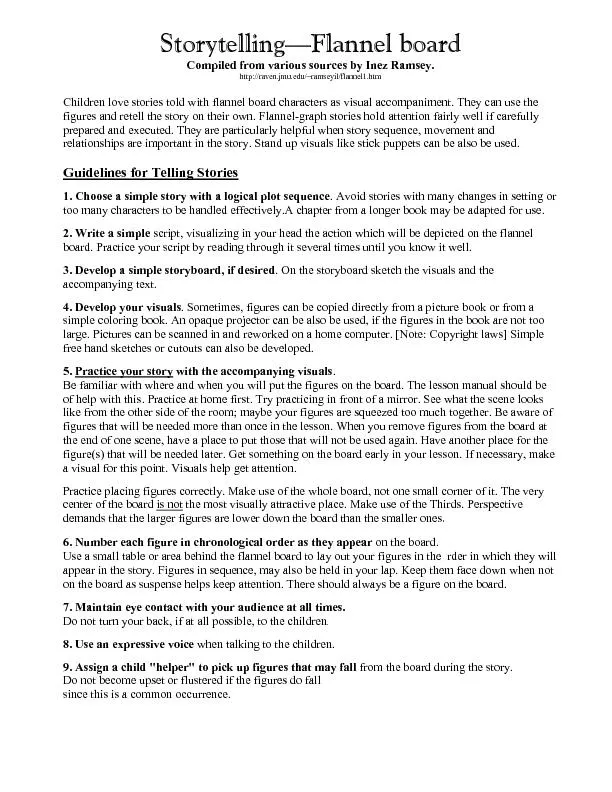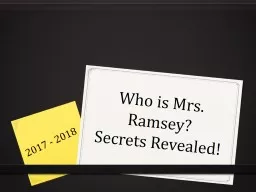PDF-Compiled from various sources by Inez Ramsey. http://raven.jmu.edu/~ra
Author : tawny-fly | Published Date : 2016-04-15
1 Choose a simple story with a logical plot sequence Avoid stories with many changes in setting or too many characters to be handled effectivelyA chapter from a
Presentation Embed Code
Download Presentation
Download Presentation The PPT/PDF document "Compiled from various sources by Inez Ra..." is the property of its rightful owner. Permission is granted to download and print the materials on this website for personal, non-commercial use only, and to display it on your personal computer provided you do not modify the materials and that you retain all copyright notices contained in the materials. By downloading content from our website, you accept the terms of this agreement.
Compiled from various sources by Inez Ramsey. http://raven.jmu.edu/~ra: Transcript
Download Rules Of Document
"Compiled from various sources by Inez Ramsey. http://raven.jmu.edu/~ra"The content belongs to its owner. You may download and print it for personal use, without modification, and keep all copyright notices. By downloading, you agree to these terms.
Related Documents














